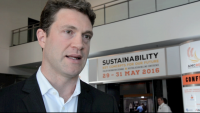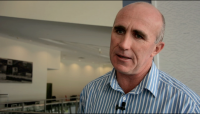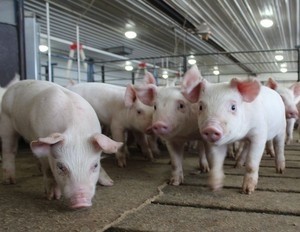Reports from PIX/AMC 2016
More protein! Feed makers must be climate clever in consumer rush
Consumer demands mean the world will need to produce 72 million more tons of protein by 2024, according to the latest Rabobank predictions. But this wave will not come without its challenges, particularly from a sustainability standpoint.
Feed in the spotlight
Angus Gidley-Baird, senior analyst for animal proteins at Rabobank, said consumers were becoming increasingly savvy on the supply chain behind their meat and fish. “It’s one of those key concerns that consumers have got at the moment. They’re starting to ask questions about the sustainability of the food they’re consuming,” he told FeedNavigator when we met up with him at the 2016 Poultry Information Exchange (PIX) and Australasian Milling Conference (AMC) in Queensland's Gold Coast.
He said many companies were already working on sustainable sourcing systems and this would impact feed manufacturers directly.
“Making sure that they’re producing things that are meeting the consumer needs, whether that includes GMOs, environmentally managed operations, water supply - all of those are going to become issues, particularly for first world countries."
Proactive production management
John Spragg, executive officer of the Stockfeed Manufacturers Council of Australia (SFMCA), said that as efforts focus on tapping into increased protein demand, industry must reduce its environmental impact.
“The challenge of course is we have to use more raw materials, we have to use more energy, more power, so the real question is how can we do that sustainably and utilizing energy – electricity, gas through the whole process.”
Spragg said energy use, electricity and gas in particular, was a vital area to focus on because it was a primary cost. “…Focus on those particular areas can provide reductions in use, cost as well as greenhouse gas emissions.”
Reaction also needed…
However, David McRae a senior scientist specialized in climate change at the University of South Queensland, warned companies would also have to be reactive to climate variability.
“…It’s all about managing that climate risk. And it really doesn’t matter if that’s short-term climate variability in the next 3 months or a longer-term trend over the next 5 years... I certainly think we can put some effort in working on our business structures and decision making processes and becoming more robust.”
Dr Steve Jefferies, CEO of grain breeding specialist Australian Grain Technologies, said his company had already started to adapt to variable weather patterns.
“Our biggest effort really in selecting for climate change is essentially running a very large, multiple site, multiple environment, multiple years field program.”
This, he explained, had been done to encourage passive selection – where plant populations adapted along with climate changes.
Jefferies said genetic breeding could be one answer to increasing feed output over the coming years, but digital technology and precision farming efforts would also go a long way.











